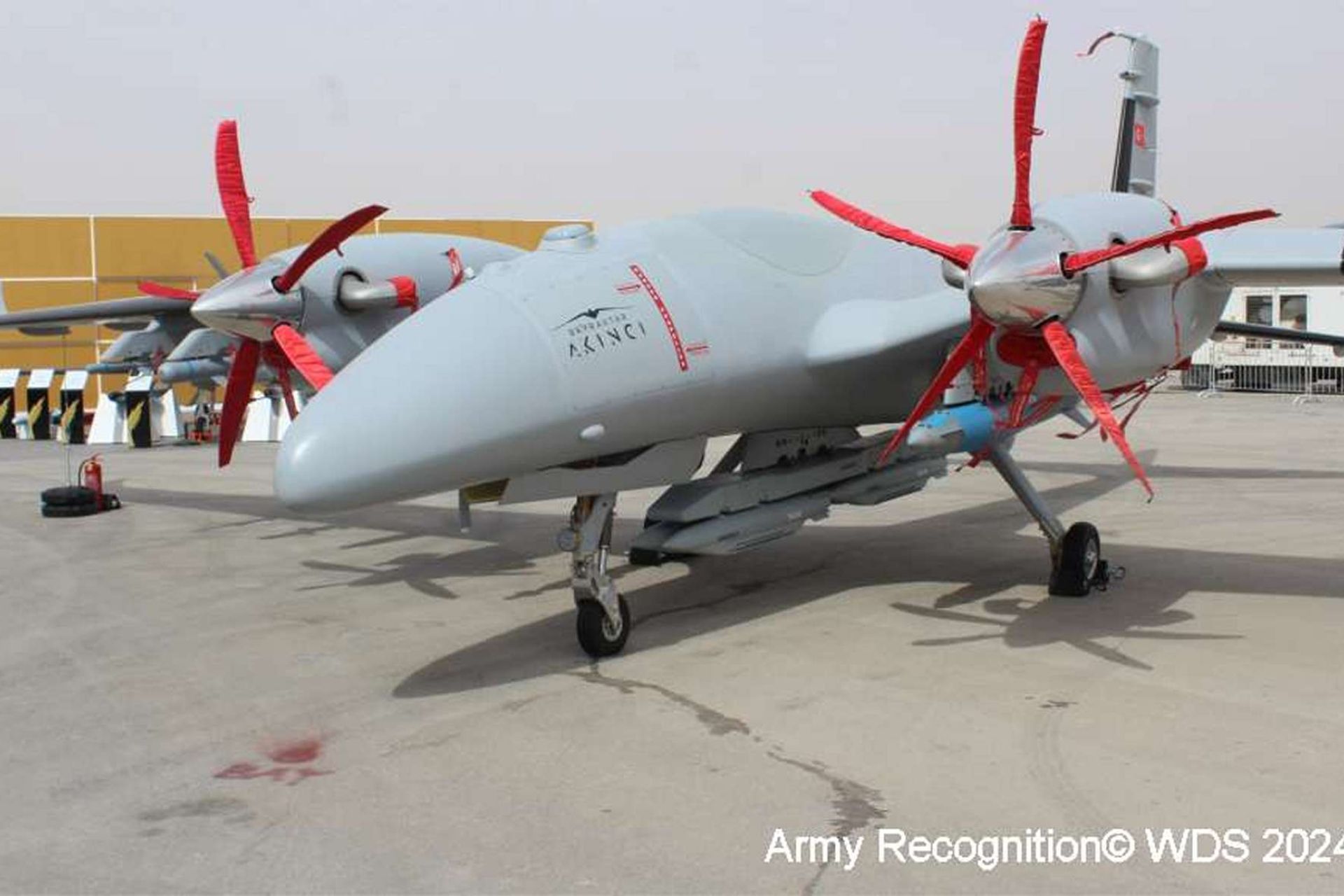Breaking news
Turkish Bayraktar TB3 and Akinci UAVs Successfully Complete Interoperability Formation Flight.
In May 2024 Baykar's X account announced that the Bayraktar TB3 drone successfully completed a transfer flight from Çorlu to Kesan, Edirne. Notably, the flight was conducted in formation with an Akinci UAV, showcasing the advanced aviation technology capabilities of Türkiye.

Bayraktar TB3 Unmanned Aerial Vehicle (Picture source: Baykar)
Selcuk Bayraktar, the Chairman of the Board and Chief Technology Officer at Baykar, commented on the event via his X account, stating, "We monitored the Bayraktar TB3 as it completed system identification and performance tests and embarked from our flight training and test center in Çorlu to Kesan." This flight signifies a milestone in technical development for Baykar and marks an important advancement in the modernization of Türkiye’s defense capabilities.
The Bayraktar TB3, engineered by Baykar Savunma, is a drone equipped with foldable wings and designed for short takeoffs and landings, making it ideal for operations from the TCG Anadolu amphibious assault ship and fulfilling the strategic needs of the Turkish navy.
The formation flying of the Bayraktar TB3 with the Akinci demonstrates significant tactical advantages in terms of interoperability and battlefield coordination. This capability allows for effective real-time data sharing among different UAV platforms, thus enhancing the accuracy and reliability of the information collected. This strategy enriches reconnaissance and surveillance missions, enabling drones to cover extensive areas and gather redundant data on specific targets.
Additionally, this method of formation flying increases the tactical flexibility of military operations. The Bayraktar TB3, specialized in precision strikes due to its ability to carry heavy munitions, can operate simultaneously with the Akinci, which can focus on reconnaissance and surveillance or engage other targets. This approach of combined force deployment acts as a force multiplier, maximizing tactical impact without deploying human troops or manned systems in high-risk environments.
On a technological and strategic level, formation flying also serves to test and develop the capacity of drones to operate synergistically, a crucial aspect for the future of automated combat strategies. By showcasing these capabilities, Türkiye highlights its advancements in UAV technology, thereby strengthening its status as a leader in the global defense industry. This demonstration of strength and technological innovation also serves as a deterrent tool, affirming Turkey's position on the international stage of advanced defense technologies.
Internationally, interoperability among drones is a key area where the United States and Israel have made significant advancements, allowing their drone systems to collaborate effectively not only with each other but also with other defense systems and operational platforms. Turkey is thus also joining the most advanced nations in this regard.
In the United States, systems like the MQ-9 Reaper are perfect examples of this interoperable capability. This drone can easily integrate its operations with other platforms from the army, navy, and air force, thanks to advanced communication systems that allow for smooth data exchange. These data exchanges are crucial for missions requiring close coordination, such as joint surveillance operations or coordinated strikes. The RQ-4 Global Hawk further illustrates interoperability at a strategic level, as it shares its extensive reconnaissance data with various military branches and even allies, through secure and reliable communication networks.
In Israel, interoperability is also a priority, as shown by the Elbit Systems Hermes 900 drone. This system is designed to operate in coordination with other drones and ground control systems, thus optimizing surveillance and reconnaissance efforts. The IAI Eitan (Heron TP) goes further, integrating its operations not only with Israeli land and air forces but also in multinational contexts, facilitating large-scale operational integration.
In Turkey, the TB3 is designed for medium-altitude long-endurance (MALE) operations and is capable of short-range takeoffs and landings. Notably, it can operate from aircraft carriers like the TCG Anadolu, thanks to its foldable wings—a modification necessitated by Turkey's exclusion from the F-35 procurement program, which led to adjustments in the ship’s specifications to accommodate UAVs such as the Bayraktar TB3.
The development of the TB3 was publicly announced by Selçuk Bayraktar on October 29, 2020, highlighting the integration of a high-performance domestic engine, presumed to be the PD-170 or its derivative. The first computer-generated images of the TB3 on the TCG Anadolu were released on July 21, 2021, displaying its innovative design that facilitates operations alongside the jet-engine-equipped Bayraktar Kızılelma.
Key milestones in the development timeline of the TB3 include the unveiling of the first prototype on March 27, 2023, a successful test run on October 13, 2023, and initial take-off and landing tests on October 20, 2023. The UAV's maiden flight occurred on October 27, 2023, and it achieved another significant milestone on November 11, 2023, flying with its landing gear retracted for the first time.
The Bayraktar TB3 has a length of 8.35 meters and a wingspan of 14 meters. It supports a maximum takeoff weight of 1,450 kilograms and a payload capacity of 280 kilograms. Powered by the TEI PD170 engine, it reaches a maximum speed of 160 knots (300 km/h) and a cruise speed of 125 knots (232 km/h). Its operational range extends to 1,000 knots (1,900 km). The TB3 is equipped with six hardpoints for various laser-guided munitions and features advanced avionics, including the expected integration of interchangeable EO/IR/LD imaging and targeting sensor systems or a Multi-Mode AESA Radar.
Baykar has significantly contributed to defense export markets, with exports accounting for 83% of its revenue since 2003. In 2023, Baykar's exports amounted to $1.8 billion, representing over 90% of its income and one-third of the total sector exports, establishing it as the world's largest UAV exporter with contracts across 34 countries.

Turkish Akinci Unmanned Aerial Vehicle (Picture source: Army Recognition)


























